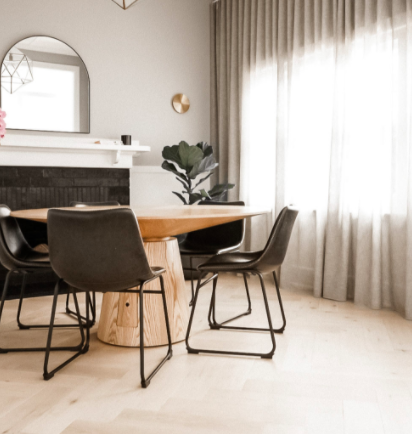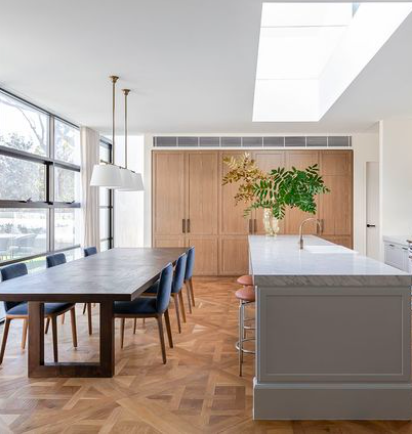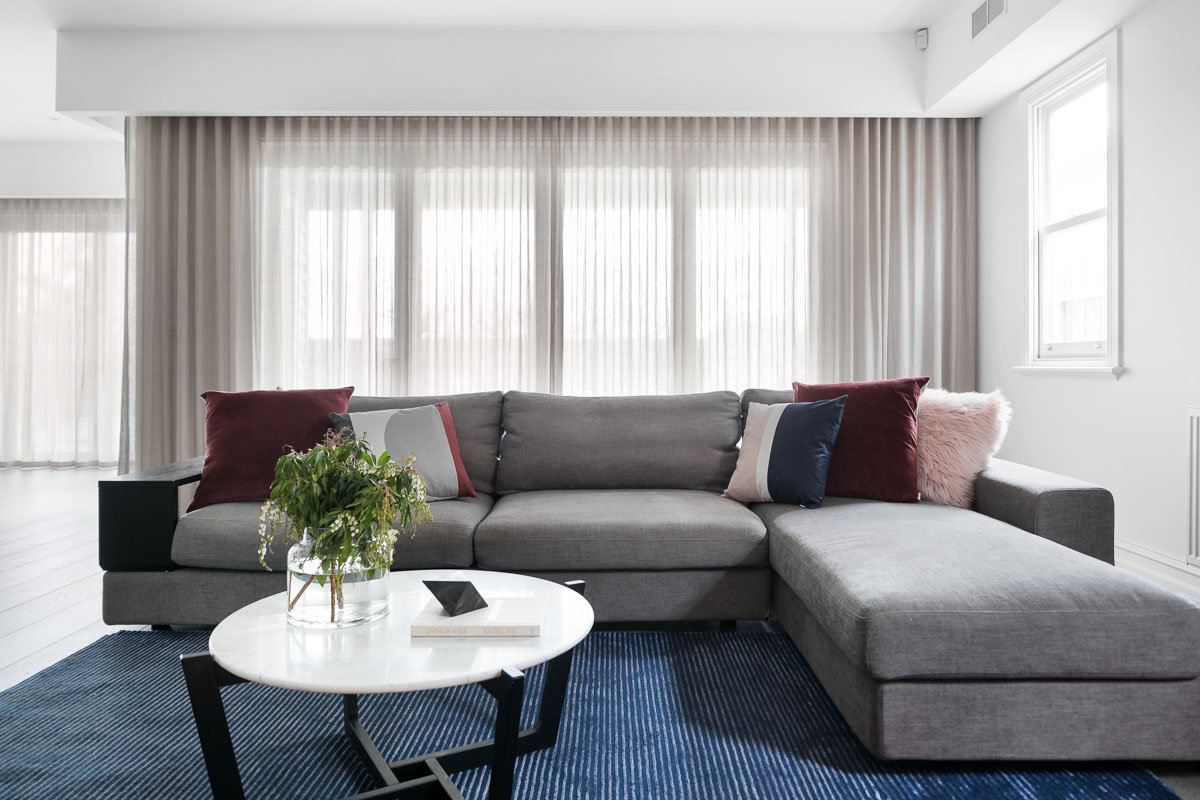Window coverings are like that final icing on the cake – they’re often the last thing to be installed on a new home because you want all your other trades finished up before you hang your new window dressings – but they are one of those layers that just make a space feel complete.
Trends for window coverings are always evolving and they’ve definitely come a long way in the last 10 years or so. We have gone from a very functional approach, where it was all about blocking out the view and insulating the window, to the current trend where the window dressings are very much a part of the final aesthetic.
Whether you have a modern or traditional home, the window coverings are going to help you to achieve the particular look that you are wanting to achieve, but they’re also going to play an important role in keeping your home well-insulated and running efficiently.
Whilst this is one of the final layers to be installed, I definitely recommend that you start thinking about your window dressings as early as possible, as this will influence things like window placement and selection of other materials and finishes. Your builder will also need to know in advance if you require supports in the ceiling for ceiling hung tracks, electrical points for motorisations or if you would like recessed pelmets built in to your frame.
There are hundreds of options out there, whether you’re looking for something ready-made or custom made for your home, so I wanted to give you a quick run down here to help you work out the best option for your home.
Shutters
+ Made famous in very classical, Hamptons style homes, plantation shutters are a traditional option that is still very popular now.
+ Originally done in painted white timber, they are now also available in a more durable and low maintenance PVC.
+ Great insulators, easy to open them up for both light and ventilation and pretty low maintenance.
+ Great for wet areas, such as bathrooms, where you would like privacy but want to be able to wipe them down.
+ If you’re worried that your home is too modern to pull off a plantation shutter but like the features, then check out some of the aluminum or black, wider blade shutters that give you all of the benefits of traditional plantation but with a more contemporary take.
Roman Blinds
+ For smaller rooms, romans are often a great option, as they don’t take up alot of space and can be quite discrete.
+ They use less fabric than a curtain, so they can be a more affordable option.
+ Can be made with a blockout fabric or sheer, depending on what the space needs.
+ There is the option of mounting the blind within the reveal of the window, or directly on the wall.
+ Where you want to minimise the amount of light coming in, it’s best to mount directly to the wall and give yourself a good 100mm or more of fabric overlap on all sides of the window.
+ If you want 100% blockout, this is not going to be the best option for you – there will always be some light that passes through the gap between the wall/window frame and the fabric.
Roller Blinds
+ Whilst roller blinds used to be the standard issue for contemporary homes, they don’t provide any decorative element to a space, so I would suggest that they are most suited to a very utilitarian space, such as a laundry or as an addition behind a sheer curtain to add a layer of blockout.
+ I usually try to get the barrel of the blind mounted up in the ceiling (with a recessed pelmet) so that you can’t see it when it has been pulled up.
+ To minimise the detail on a roller blind, I always opt for a self-lathe, which means that the weight that is inserted at the bottom of the fabric is covered in the same fabric as the blind. Using a decorative silver or black metal lathe is only going to draw attention to something that we want to disappear as much as possible.
Blockout Curtains
+ Blockout curtains are one of the best options available for insulation, as well as for total light blockout.
+ If you want a very dark room, no other option is going to give you the level of blockout that curtains can.
+ Hanging your curtains from ceiling to floor and wall to wall is going to give you the maximum impact visually, but also provide you with the most effective layer of insulation.
Sheer Curtains
+ Sheer curtains are now one of the most popular options for new homes and contemporary renovations, especially when hung with the popular s-fold or ripplefold track.
+ They can give you that much needed softness and texture that alot of modern spaces need, whilst still allowing plenty of light in.
+ The fabric that you select will determine the amount of light that passes through, but most provide enough filter light to brighten up a space, whilst still giving privacy from neighbours.
+ Be sure to consider the track length for your curtains to ensure that the fabric sits off the glass as much as possible when they’re open to maximise light and use of the windows or doors.
So there you have it… that’s my express guide to window coverings!
Don’t be afraid to mix them up throughout your house. Different rooms will have different uses and therefore require a different window treatment but try to get street facing rooms to provide a consistent look for the front of your house.
If you have any questions, don’t hesitate to drop me a message.
Amanda x

I’ve got to be honest, when engineered floors first started appearing in the showrooms, I was a little skeptical.
I had this perception that these were just a cheaper, inferior alternative…

If you think your biggest decision is whether to go for timber floorboards or tiles in your new home, then you might be surprised to see how many more decisions you need to make to specify your timber flooring.

[…] What are the options for window coverings? […]